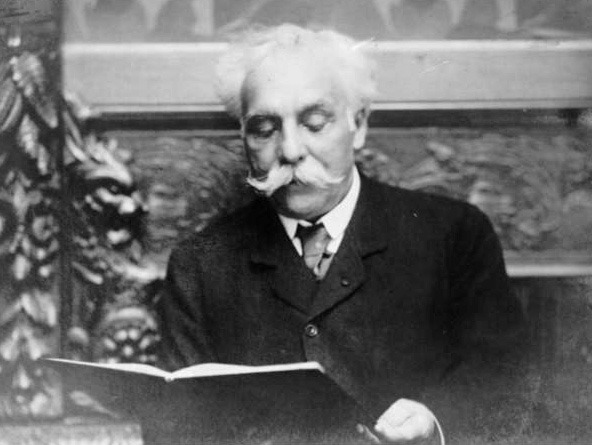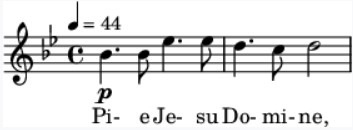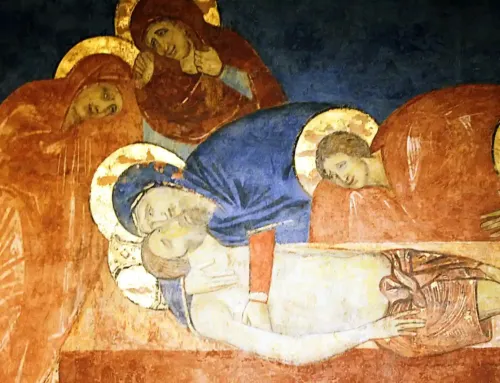As we enter a new year and a new era for our country, we need much prayer to make our lives and work successful.
We can all find great comfort in the most fundamental of God’s attributes, which is His Divine Mercy. There is a favorite devotion by that name, of course, but we have the prior divine revelation and the very words of Jesus Himself upon which we base our hopes for mercy:
“Come to me, all you who labor and are burdened, and I will give you rest. Take my yoke upon you and learn from me, for I am meek and humble of heart; and you will find rest for yourselves. For my yoke is easy, and my burden light.” (Matthew 11:28-30)
Catholics believe in the tender mercy of God toward all His children. This belief even extends beyond the grave. We take seriously our spiritual obligation to pray for those who have gone before us, which is why we have funerals to pray for them.
A Tradition of Grace
In the vast artistic tradition of the Christian Church, artists through the ages have tried to put into song the deep sentiments of mercy flowing from the Heart of Christ, and none has done that better than the French composer, Gabriel Fauré.
Works like his incomparable Pie Jesu remind us of Christ’s great love for humanity and our duty to extend that mercy to our deceased brothers and sisters through prayer.
First, a word about the creator of this soul-stirring piece. Gabriel Fauré was one of the premier composers and directors of the late 19th and early 20th centuries, though surprisingly, he was not a man of deep faith.

The Requiem Mass
Yet, I cannot believe that someone who created the Pie Jesu (Merciful Jesus) was without the deepest religious intuition and sentiment. He must have had a mystical soul.
Fauré’s Pie Jesu hymn is one element in the longer composition called Requiem, often considered his greatest composition. A requiem, as such, is simply a Catholic Mass set to music. More specifically it is a funeral Mass. During the Renaissance, the requiem became a distinct musical genre and a Christian liturgical art form.
In essence, it is a small symphony that is meant to provide deep solace to mourners at the loss of a loved one, although it is rarely played at funerals. Full requiems are generally too long for that! All the great composers from the 15th century onward created their own requiems.
It is thought that Fauré composed this piece in honor of his father a few years after the elder Fauré’s death, but the composer never revealed his motive. This Requiem was, fittingly, performed at Fauré’s own funeral in 1924.
Some Specifics
Fauré’s Requiem has seven sections, of which the Pie Jesu is the most beautiful of the seven, but not by much. The Agnus Dei and In Paradisum are exquisite movements in their own right.
It is interesting that Fauré replaced the Dies Irae (Day of Wrath) movement of traditional requiems with the Pie Jesu, emphasizing the mercy rather than judgment of God and also anticipating in some way the Divine Mercy devotion of the 20th century.
(Personally, I believe our society could use a few more messages of divine wrath to get us back on track, but Fauré didn’t consult me on that matter.)
 There is nothing quite like this musical masterpiece, which was performed for the first time with a full orchestra at the World’s Fair in Paris in 1900. It has been performed by a diversity of artists since then, as you’ll see in the three performances below.
There is nothing quite like this musical masterpiece, which was performed for the first time with a full orchestra at the World’s Fair in Paris in 1900. It has been performed by a diversity of artists since then, as you’ll see in the three performances below.
As you listen, I’m sure you will agree that the Pie Jesu, in its sublime beauty, emerged directly from the mystical heart and soul of a consummate musician.
Lyrics in Latin and English
Pie Jesu, Domine,
dona eis requiem.
Dona, dona,
dona eis requiem,
sempiternam requiem.
Merciful Jesus, Lord,
Grant unto them rest.
Grant them, grant them,
Grant unto them rest,
Eternal rest.
Performances
———-
Photo credits: Image of Gabriel Fauré by De Jongh, Lausanne (1907). Public domain.




Leave A Comment